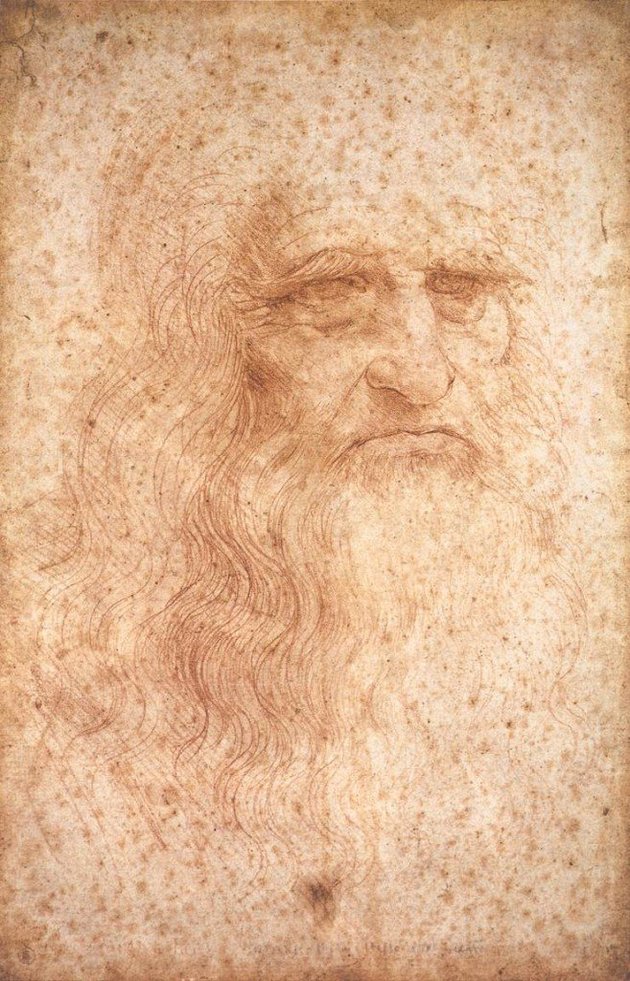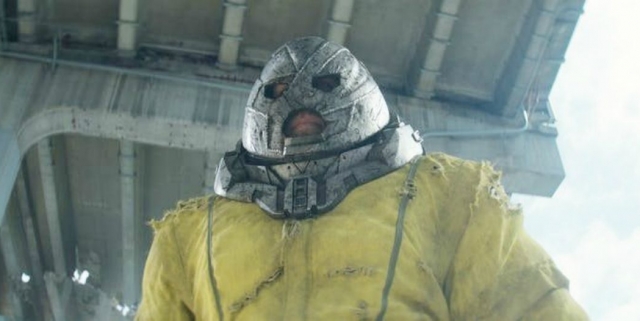chevron_left
-
play_arrow
NGradio So good... like you
Scientists Reveal Cause Of Red Spots Ruining Leonardo Da Vinci’s Self-Portrait

share
close
Back in 2012, a team of experts determined that Leonardo da Vinci’s only universally recognized self-portrait was damaged beyond repair, breaking the nerdy little hearts of art history buffs around the world.
The delicate red chalk drawing, created in 1512, was accidentally exposed to sunlight while being framed for an exhibition in 1929, which is believed to have led to what scientists call “foxing” — simply, unwanted marks manifested on the work’s surface.
For years, however, the details of those teeming marks went unknown. Were they the result of oxidized pigment or a developing fungus? Such specifics are not only helpful but crucial for scientists working to prevent the burgeoning mass of little reddish brown spots from completely consuming poor Leonardo’s face.
Well, thanks to a research team led by Guadalupe Pinar at the University of Natural Resources and Life Sciences in Vienna, we now know that the spots resulted from several species of fungus, as published in Environmental Microbiology Reports. (Yes, these findings are the result of the new “non-destructive and non-invasive diagnostic method” we’ve been waiting for.)
First, scientists extracted DNA from the drawing, then magnified the fungal internal transcribed spacer regions, cloned the recovered fragments and compared the results with the microbial community. While the “non-culturability of the microorganisms inhabiting the portrait” prevented researchers from identifying the exact fungus responsible, they could tell the fungal community was dominated by fungus of the Ascomycota phylum, and particularly a previously uncharacterized Acremonium species.
As described in Discover Magazine: “Their electron microscopy efforts revealed a zoo of fungal forms: smooth spheres wrapped in filaments, spiky cells congregating on a mysterious particle, and flattened disks with cross-hatched scars.”
How strange to think that all of these diverse, alien fungal forms appear, to the naked eye, like annoying brown spots. The results suggest that the foxing began when dust-borne iron particles landed on the paper, disrupting its structure. This then allowed fungal organisms to burrow into the paper, surviving by shutting down their metabolism, and occasionally spewing out oxalic acid which further damaged the paper.
The recent discovery bodes well for conservators hoping to devise a restoration strategy to save Leonardo from his spotty fate. Although there’s still a ways to go in determining the proper plan for restoration, understanding precisely how the spots formed will prevent scientists from further damaging the work.
Thank you Guadalupe Pinar, Hakim Tafer, Katja Sterflinger, and Flavia Pinzari for determining the chemical makeup of those pesky red spots in Leonardo da Vinci’s beard. Now it’s just a matter of determining the proper technology to remove them.
Source: huffingtonpost.com
Written by: New Generation Radio
Rate it
Similar posts
ΔΗΜΟΦΙΛΗ ΑΡΘΡΑ
COPYRIGHT 2020. NGRADIO




















Post comments (0)